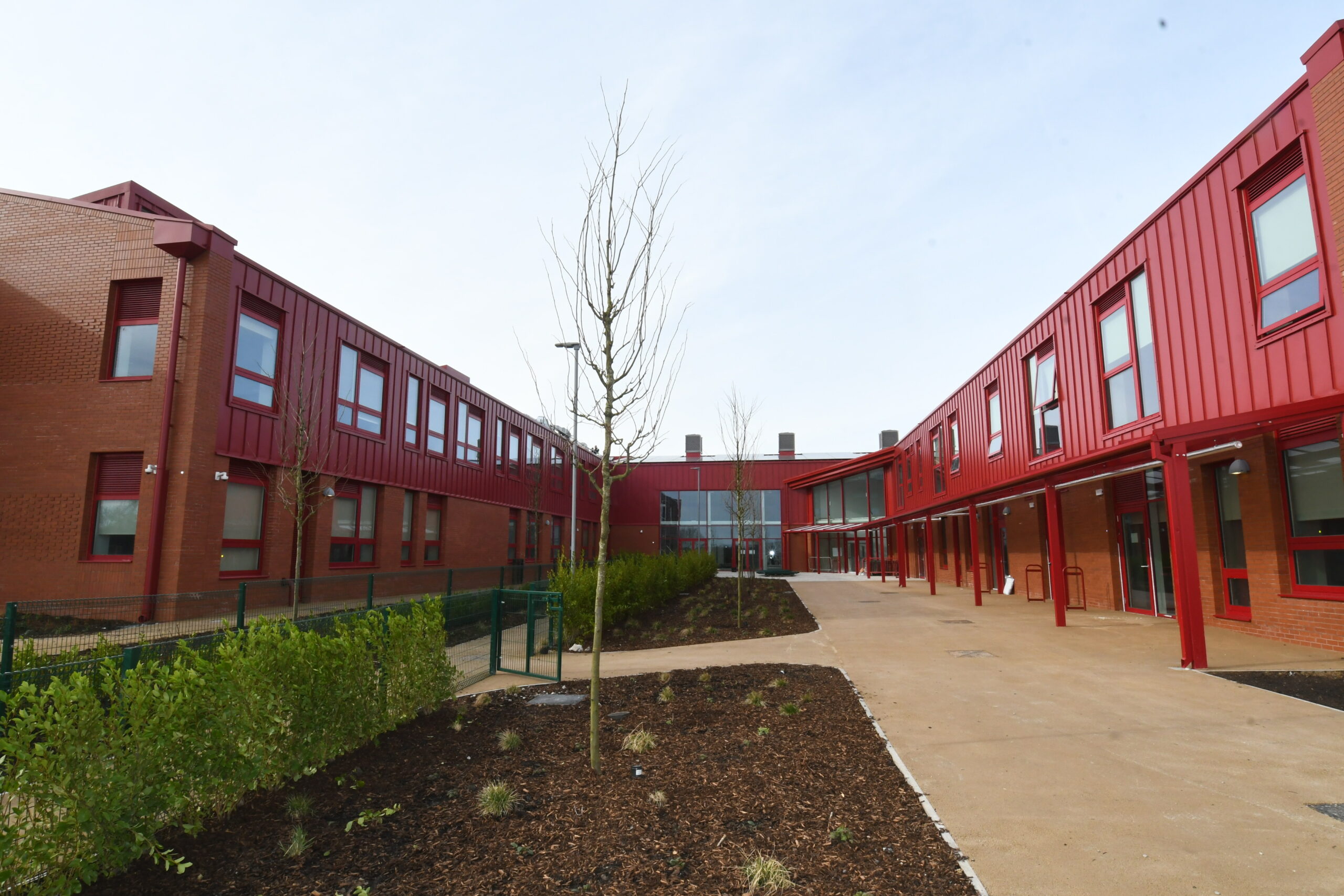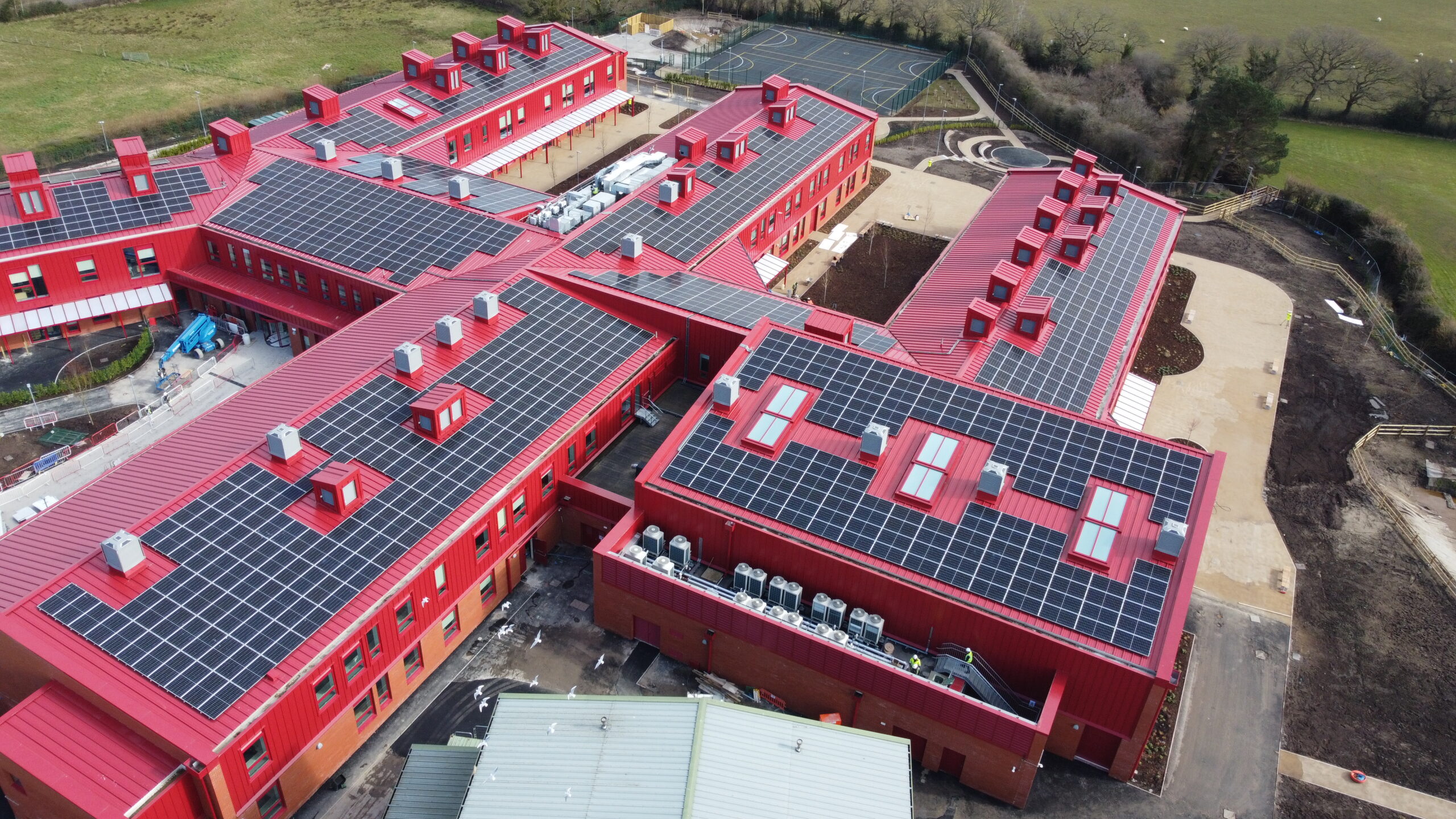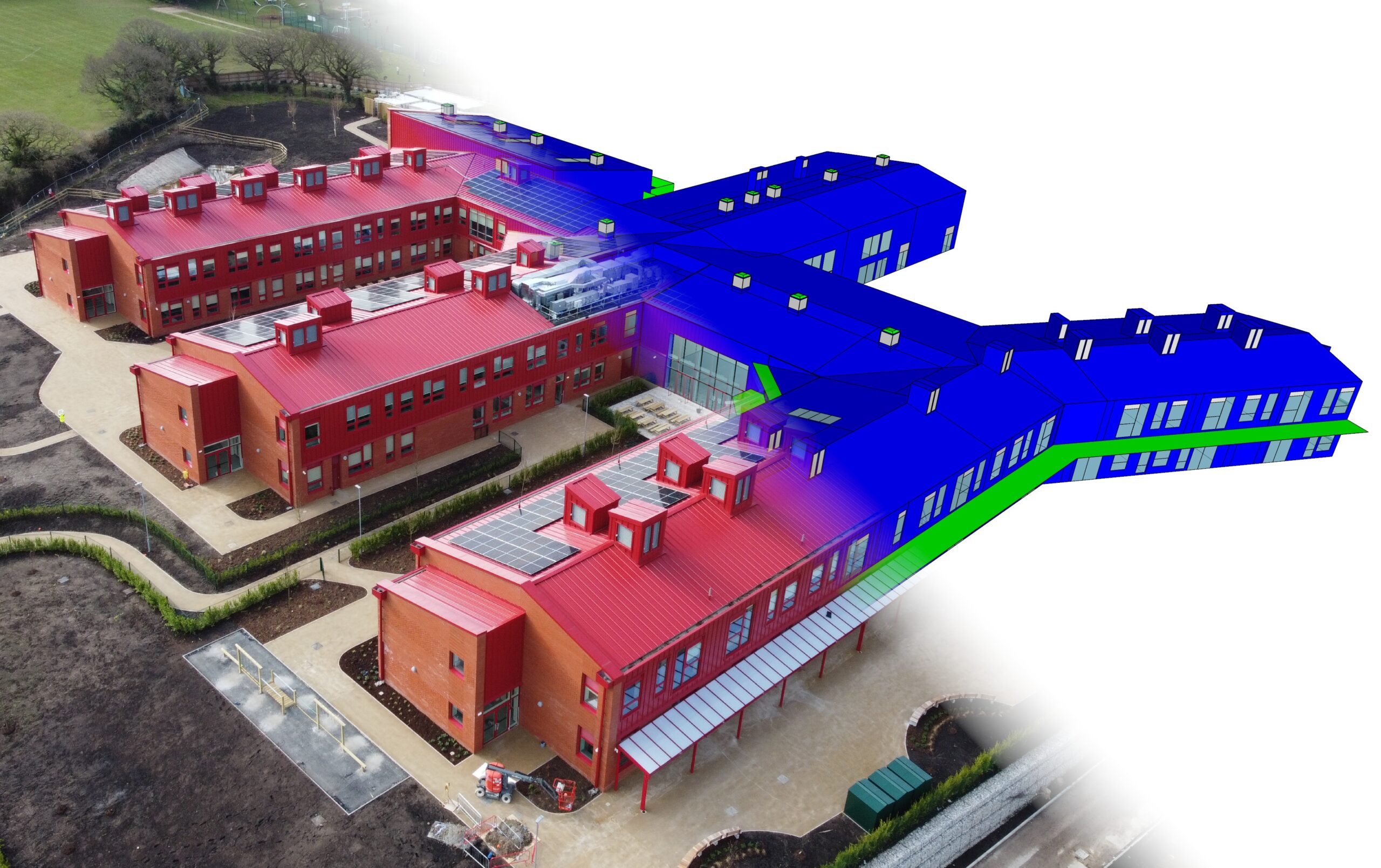
Wales’ first Net-Zero Carbon in operation (NZCio) school campus in Mynydd Isa sets a new standard for sustainable educational environments. This pioneering project, designed with the aid of IESVE software, demonstrates exceptional energy efficiency and climate resilience, backed by a 25-year performance commitment.
The campus, which accommodates 43 nursery, 600 primary, and 700 secondary pupils, was completed in 2025 through a collaboration between Arup, the Welsh Education Partnership Company (WEPCo), Sheppard Robson Architects, and Robertson Construction Group.
Building Physics and Climate Resilience
To support the project’s stringent 25-year optimal performance targets, Arup’s role focused on the building physics and the energy and thermal comfort analysis, in particular. For this they utilised IESVE dynamic simulation modelling, comparing actual performance against the design and adjusting parameters accordingly with real-world data.
Beyond BB101 requirements, the project met CIBSE TM52 guidelines for overheating prevention and demonstrated resilience against future climate scenarios, including a projected two-degree temperature increase by 2050.
IESVE was crucial in assessing overheating risks under various conditions, such as typical years, warm summers, and prolonged heatwaves. With mechanical cooling essentially off the table for NZCio, Arup parametrically tested early designs, focusing on airtightness and optimising glazing and system efficiencies.
Optimising Energy Efficiency with Dual-Mode Ventilation
IESVE was instrumental in developing an optimal dual-mode ventilation system for energy efficiency. In winter, the campus uses Mechanical Ventilation Heat Recovery (MVHR) units, which recover heat from outgoing air to significantly reduce heating demand. During summer, the MVHR switches off, and the building shifts to natural ventilation mode by opening the windows and specially designed cross-flow chimneys. A classroom “traffic light system” signals teachers when to open windows fully if overheating is detected. The campus’s “finger-block” layout, which separates primary and secondary teaching areas, inherently maximises natural ventilation and daylighting, while minimising overheating through an east-west orientation.

Achieving Net-Zero Carbon in Operation
From early concept, Arup and the team agreed to an all-encompassing NZCio definition, including both regulated and unregulated energy consumption.
Working closely with the architects, the building’s two-storey layout was optimised to maximise roof space for PV. 1,080 solar panels were installed across 2,500 m² of rooftop space, with the system expected to produce over 500,000 kWh of electricity annually, cutting carbon emissions by more than 100 tonnes each year.
The team continuously refined the complex IESVE model to maintain NZCio status. Cross-ventilation, facilitated by façade windows and specially designed chimneys, was carefully integrated and extensively tested through scenario modelling in IESVE to better understand the building’s long-term performance. The software also highlighted the critical need for rigorous airtightness testing to meet pressure testing requirements.
Performance Insights and Promising Results
Beyond achieving its NZCio target, the Mynydd Isa Campus boasts a BREEAM ‘Excellent’ rating and targets a maximum embodied carbon of 800kgCO2/m². Since its opening in April, feedback has been overwhelmingly positive.

IESVE was vital throughout the project, from early parametric testing to refined ventilation design and energy modelling, enabling validation of the design while highlighting sensitivities and areas for improvement.
Steven Burrows, Associate Building Physics Engineer at Arup, commented: “I feel honoured to have worked on this project from the very beginning and take it through to completion. IESVE modelling helped play a significant role in the design of the scheme, from developing the complex cross ventilation chimney concept to achieving NZCio. It’s an incredible achievement that the building generates as much energy as it will consume over the course of a year.”
Read the full case study: https://www.iesve.com/products/case-studies/55762/arup-mynydd-isa
Learn more about IESVE: https://www.iesve.com/software/virtual-environment
